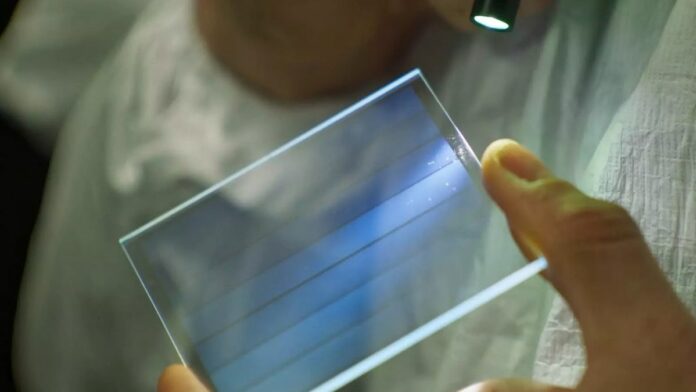Is glass the future of storage?
Yes, that’s what Microsoft’s Research team believes as it tests the storage of large amounts of data on glass plates that could help reduce the size of data centers storing data like documents, photos, and videos.
This new kind of storage technology, dubbed “Project Silica”, aims to write data in a piece of glass and store it on a shelf until it is needed. Once written, the data inside the glass cannot be changed.
Richard Black, Research Director, Project Silica, adds, “This technology allows us to write data knowing it will remain unchanged and secure, which is a significant step forward in sustainable data storage.”
Microsoft describes glass storage as a sustainable cloud storage solution, as Magnetic storage, although widespread, is problematic. Its limited lifespan demands frequent re-copying, increasing energy consumption and operational costs over a period of time.
“Magnetic technology has a finite lifetime. You must keep copying it over to new generations of media. A hard disk drive might last five years. A tape, well, if you’re brave, it might last ten years. But once that lifetime is up, you’ve got to copy it over. And that, frankly, is both difficult and tremendously unsustainable if you think of all that energy and resource we’re using,” says Ant Rowstron, Distinguished Engineer, Project Silica.
On the other hand, Project Silica can store massive amounts of data in glass plates roughly the size of a drink coaster and preserve the data for thousands of years.
According to Microsoft, a small glass disc can hold up to 7 terabytes (TB) of data, which is equivalent to approximately 1.75 million songs or 3,500 movies for at least 10,000 years without degradation.
“Data is stored in glass via a four-step process: writing with an ultrafast femtosecond laser, reading through a computer-controlled microscope, decoding, and finally, storing in a library. The library is passive, with no electricity in any of the storage units. The complexity is within the robots that charge as they idle inside the lab, awakening when data is needed. They climb the shelves, fetch the glass, and then zip back to the reader,” says the Microsoft Research team.
Currently, Microsoft Research is working with Elire, a sustainability-focused venture group, to harness the Project Silica technology for the latter’s Global Music Vault in Svalbard, Norway.
The tech will allow them to create a durable archive for songs that can be stored using silica-based glass plates, which are not only resistant to electromagnetic pulses and extreme temperatures but also environmentally friendly.
Microsoft says glass storage is still in its early stages and will take three to four developmental stages before it can be used commercially.
However, as per the recent developments shared by the company, we can very well be looking at a long-lasting, sustainable, and cost-effective technology in the future.

